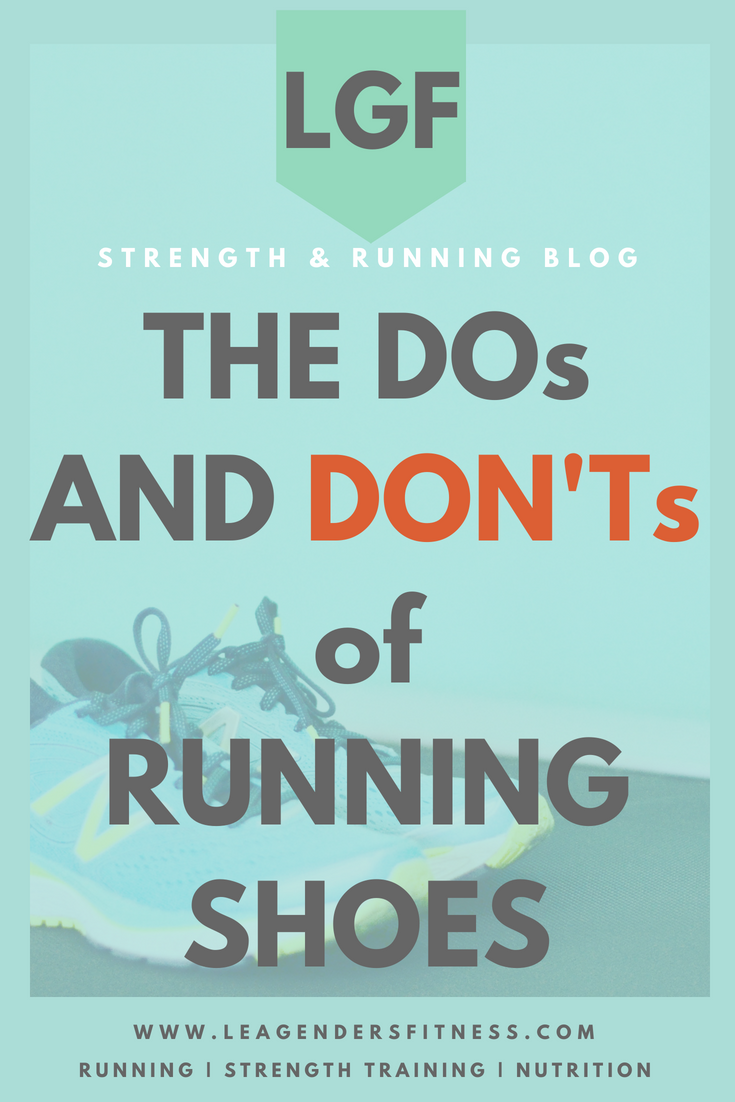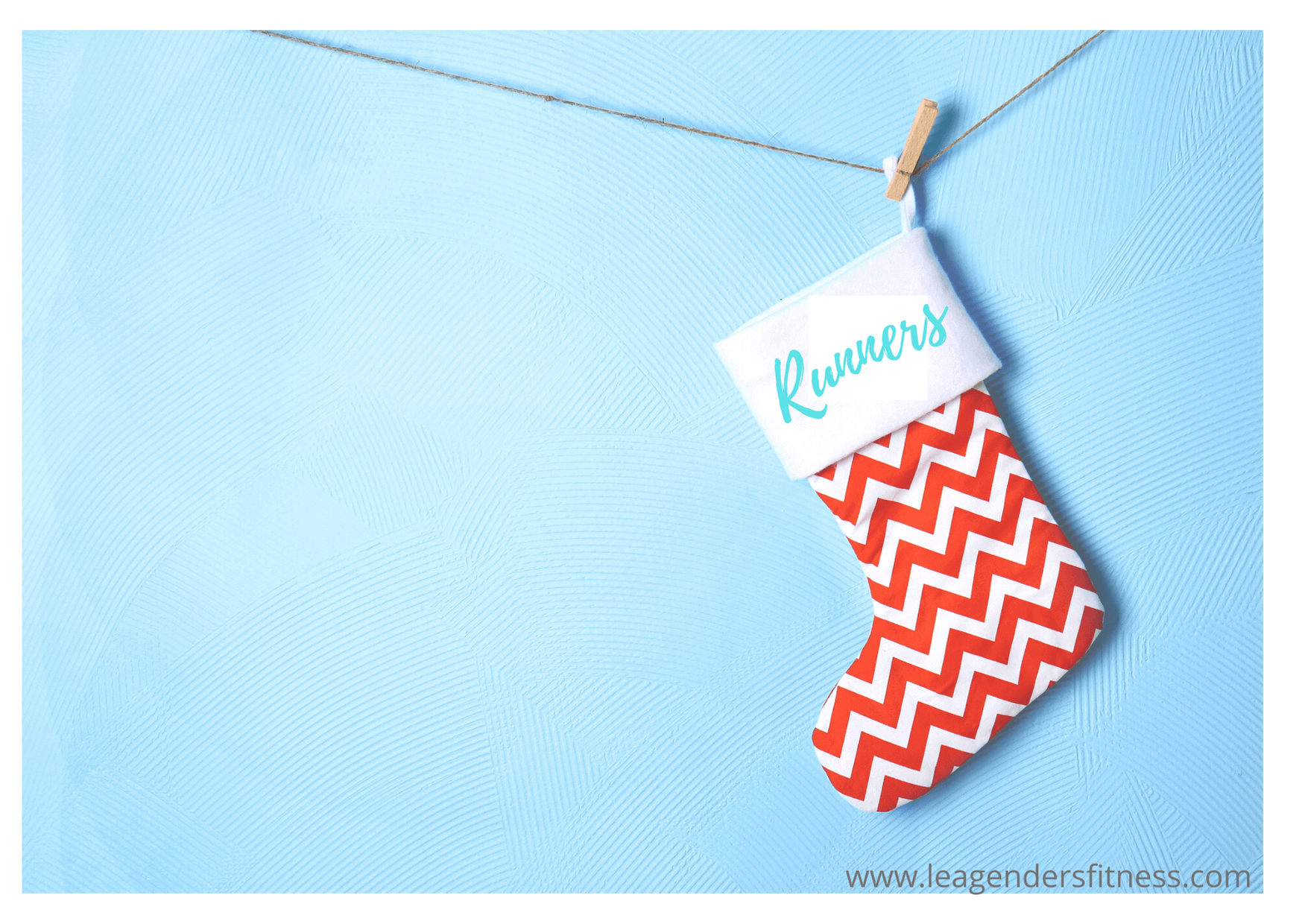You decide to start running (or running again) and dig out those old gym shoes from the back of your closet. Now you're ready to go. Not so fast, speedy. If your shoes have mud stains from your trip to the lake two summers ago, it's probably time for an update. How can you tell if you need an update? What should you look for in running shoes? Here is a quick guide on the DOs and DON'Ts of running shoes.
the DOs and DON'Ts of running shoes. Save to your favorite Pinterest running board for later.
RUNNING SHOES DOs
DO BUY FOR COMFORT
The number one consideration in buying running shoes should be the comfort. There are a lot of misconceptions about running shoe fit, but simply put, buy what feels good to you. You shouldn't feel any rubbing or tightness around your foot. They should feel comfortable. The amount of cushion, support and structure are all personal preferences. Visit a specialty running store and try a variety of different pairs to compare and contrast the differences.
DO BUY ONE SIZE BIGGER THAN YOUR STREET SHOES
Your feet expand and swell when you run, so in order to avoid blisters and to keep all your toenails, it is advised to buy your running shoes up to one size bigger than your street shoes. I wear an eight in heels (If I ever actually wore heels) but a nine in my running shoes. No one can see the number on the box. Aim for about a thumb's width of space between where your toes end and the end of the shoe inside the toe box.
DO REPLACE EVERY 300-500 MILES
Running shoes generally have a lifespan of 300-500 miles (usually every four to six months for most runners) then they start to lose their shock absorbing qualities. Continuing to wear worn out shoes can lead to injuries, so it's best to replace your shoes when you start to see noticeable changes in the tread or inside in the midsoles. A lot of runners wear them too long and set themselves up for problems. Usually, your body will tell you when it's time to replace by delivering new aches and pains. It's important to stay on top of it.
DO ALTERNATE SHOES
I know running shoes are expensive but you can extend the life of your shoes and possibly reduce injuries by alternating the shoes you wear every time your run, especially if you run every day. Different wear patterns can change the way you strike the ground, even in subtle ways. Simply changing shoes every other day can decrease the chance of repetitive use injuries. Allowing an extra day or two for the insoles to decompress can extend their life.
RUNNING SHOES DON'Ts
DON'T BUY FOR COLOR
I know we gotta look good, right? But don't buy your running shoes for their pretty colors or flashy designs. Buy the shoes that feel good on your feet, no matter if they are yellow or green, plaid or polka dot. I know it's magic when the shoes that fit and feel the best also look fab, but don't be too rigid on your running shoes matching your favorite running shorts. Buy for feel first.
DON'T WEAR YOUR RUNNING SHOES WHEN YOU'RE NOT RUNNING
Running shoes can be expensive, so extend their life by only wearing them when you're out for a run. The 300-500 mile rule applies to every step, your shoes don't know if you're running for the bus or running for exercise. The more non-running miles you put on your shoes, the faster they will wear out. Buy a less expensive pair of cross trainers for your trip to the mall, to run errands or your cardio dance class. Save the running shoes for running.
DON'T BUY BASED ON ONLINE REVIEWS
Running shoes from the major shoe manufacturers are all good in some way, that's why they generally cost so much. Online reviews can only tell you what an individual has experienced, but that is not an indicator of how they will work for you. You won't know if a shoe will be appropriate for you until you try it on and run in it. Everyone is different and the perfect shoe for one runner could be a disaster for another. If one runner hates a particular running shoe, that doesn't mean it won't be the absolute perfect shoe for you.
The key is to find the right shoe for your running style and no one else can really tell you that without spending some time with you. Take online reviews with a grain of salt. Try on lots of shoes, test them out if you can and discover what you like best.
DON'T SQUAT IN YOUR RUNNING SHOES
As I mentioned, running shoes should be dedicated to running in order to preserve the shoes themselves, but there's another reason not to squat in your running shoes. Running shoes usually have a heel to toe drop, which means there is more cushioning under the heel than the toe. When you perform exercises in the gym, like squats, deadlifts, and leg presses, it's important that you press through your heels in order to activate the correct muscles. When you have extra cushioning under your heels, it makes it harder to press through to feel the ground beneath you.
Running shoes are made to protect you while running in one plane of motion, forward, they are not built for lateral or side-to-side support. If you are doing side lunges or shuffles in your fitness class, your running shoes may not provide adequate support.
Buy a pair of running shoes for running and a pair of cross trainers for the gym. If you're in a class like at OrangeTheory that combines running and strength training, I'd recommend running in your cross trainers before I'd recommend squatting in your running shoes. (Or be a purist and change your shoes between circuits.) Running short distances indoors on a soft and consistent surface like a treadmill is usually fine in cross-training shoes for most people.
Got the basics? Now you're ready to hit your local running store and start trying on shoes armed with the knowledge of what to do and more importantly, what not to do.
Like this post? Know someone it may benefit? It helps me when you share with your friends and followers.
Questions? I'd love to help.














When people talk about performance-enhancing drugs, they aren’t usually talking about caffeine, but if used correctly, caffeine can improve your running performance. In this blog post, I’ll teach you how to use caffeine to boost your performance. for key workouts or race day.